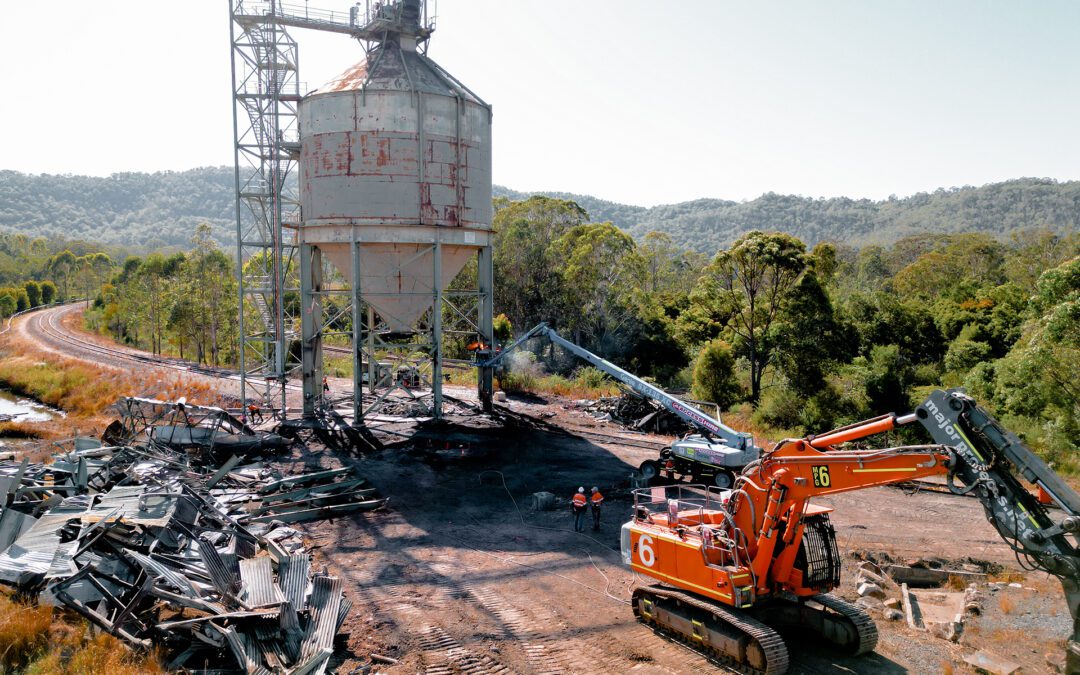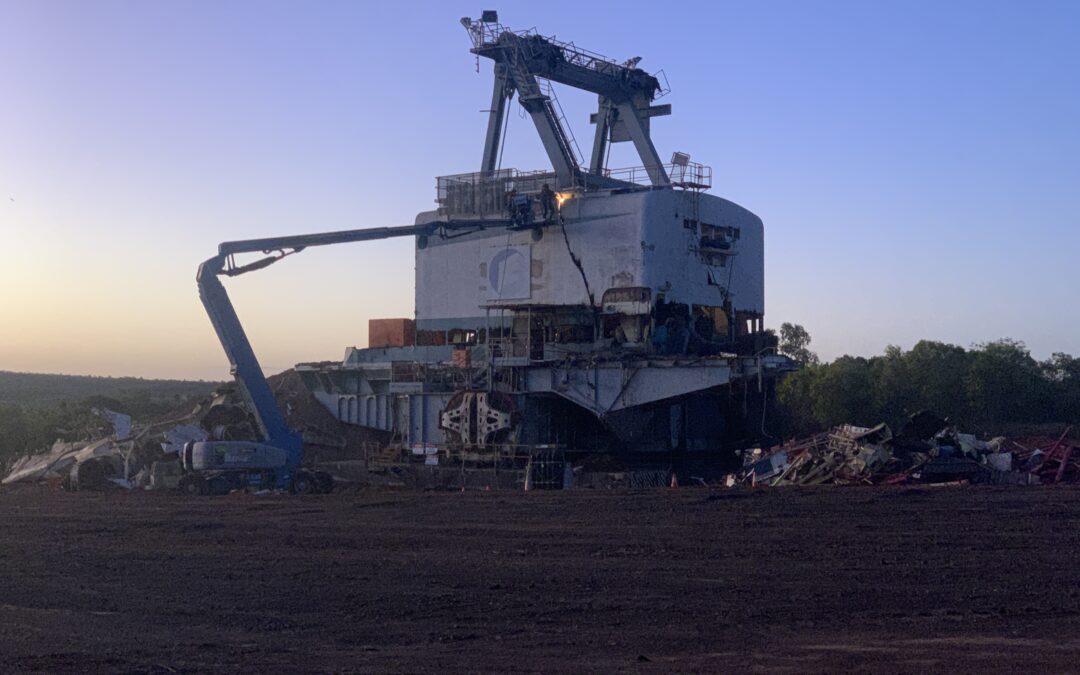Koppers chemical plant Newcastle – textbook deconstruction and remediation
Overview of the demolition project
April 2019 saw the beginning of Major Projects Group’s demolition and remediation work at the Koppers chemical plant in Mayfield, Newcastle. The site is one of 7 Australian facilities owned by the global chemical and materials company Koppers. The kilometre-long raised gantry sat 11.8 metres off the ground for the past several decades, along with an 18.6-metre-tall transfer tower. The structures were marked for removal from the site to make way for new industrial developments.
In addition to the difficulty of safely collapsing raised structures was the fact that the pipes within the gantry contained remnants of coal-tar pitch. This meant that additional hazard remediation work needed to be conducted on site both during and after the demolition work itself.
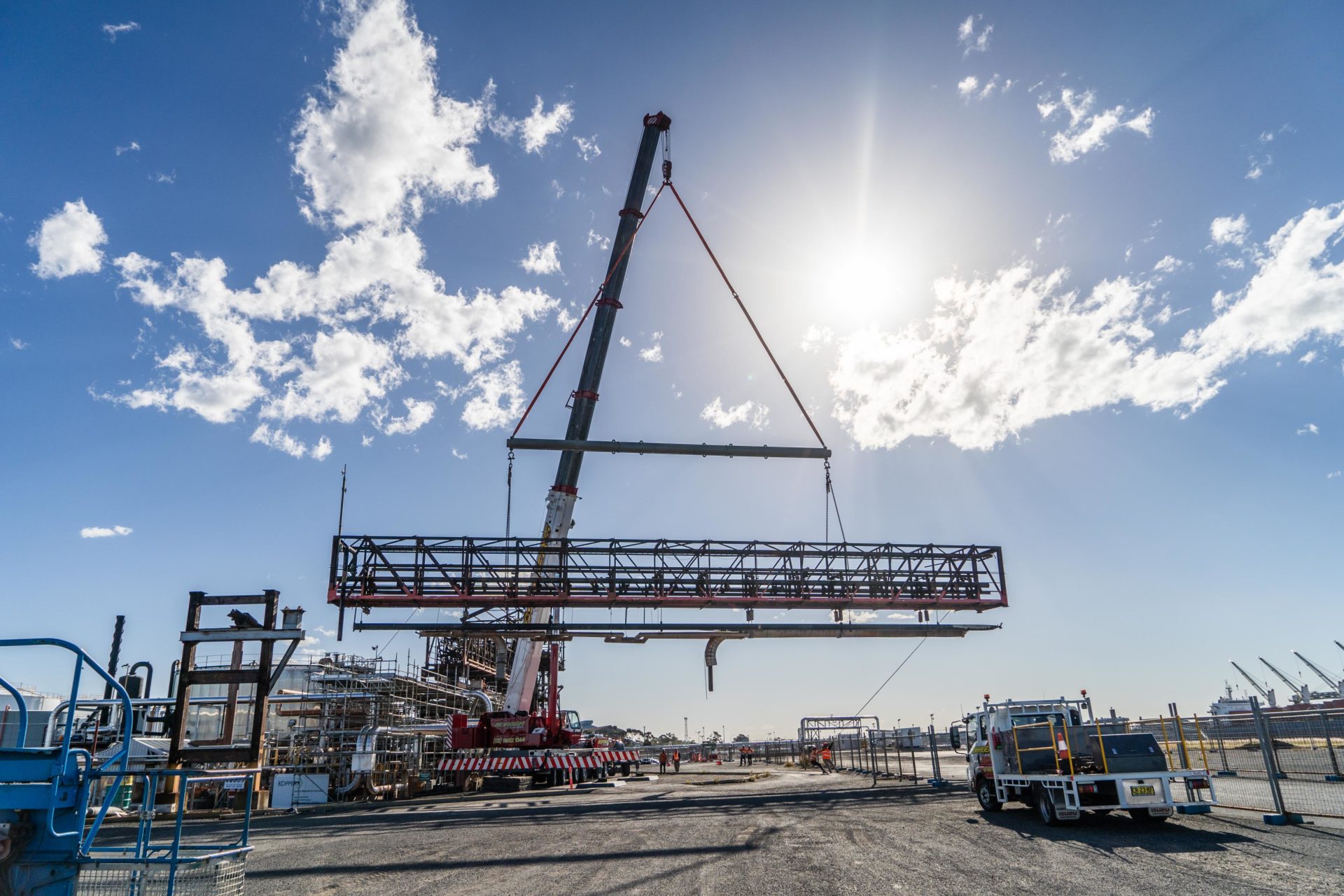
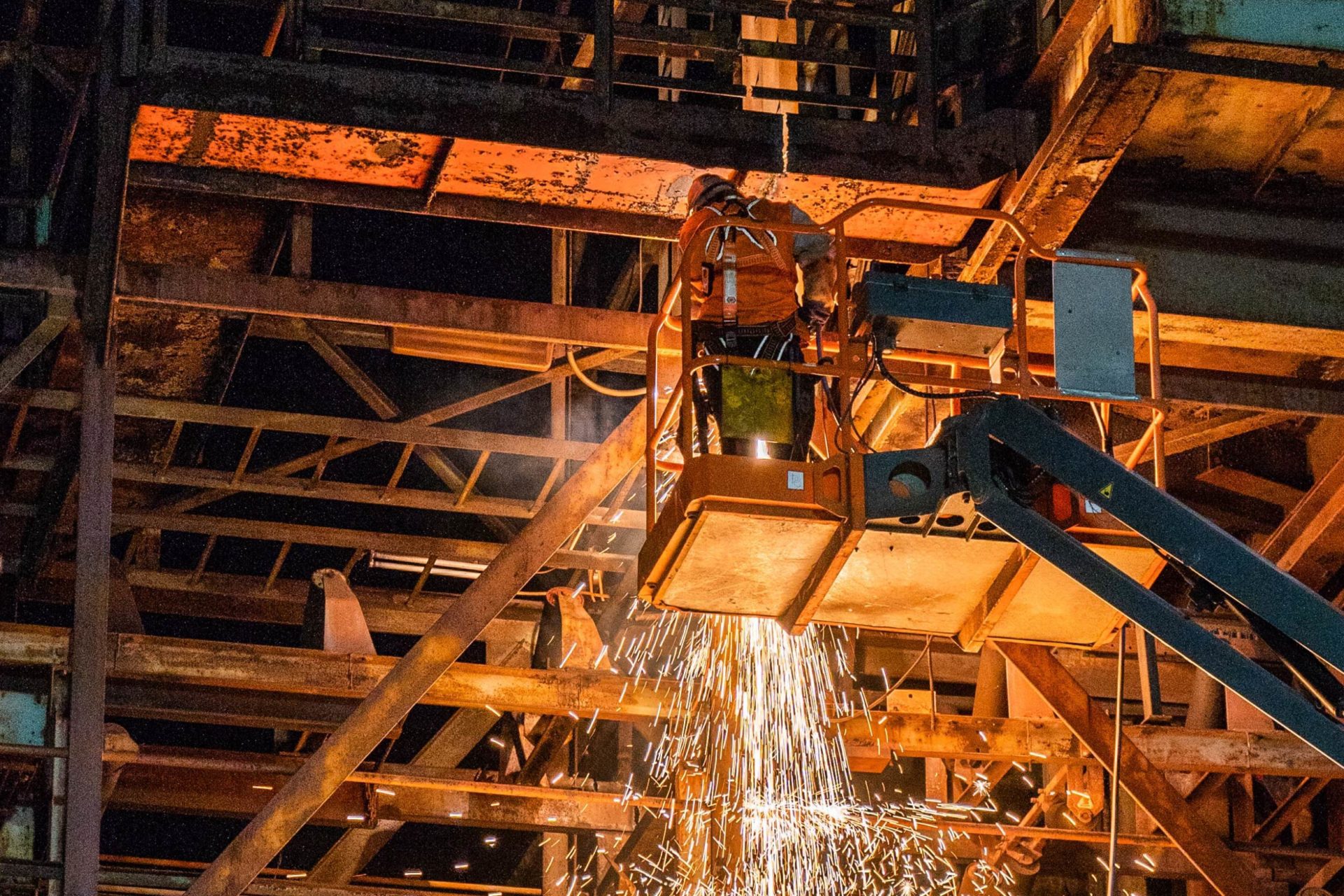
Major Projects Group at work
Major Projects Group began work at the site in early April 2019 after developing the demolition methodology and planning hazard remediation, as well as arranging all machines and personal. Eight machines were brought on site to conduct the work.
The first step was to ensure that measures were put in place to prevent any environmental impact from the remaining contents of the pipes. Work then began on the ground level pipes using Major Projects Groups’ LH-30 excavator with a shear attachment. Once the raised pipes were disconnected, a large 300 tonne crane was used to lift key sections of gantry onto the ground. This was done in a similar way to one of Major Projects Groups previous projects at Queens Warf tower, a mere 5-minute drive from this location.
With the transfer tower itself disconnected from the rest of the gantry, it could be brought down. The induced collapse of the tower involved cutting the legs in strategic places and pulling the structure with an excavator. The tower shifted to the north, but remained facing upright to minimise damage to the upper part of the structure and impact to the surrounding area as seen in this video https://youtu.be/u2J_Nn1mUl0.
The final stage of the demolition involved falling the remaining raised gantry onto the ground. The remaining scrap steel was then loaded into trucks and removed from the site. Before the end of June, all structures and material had been removed.
With the transfer tower itself disconnected from the rest of the gantry, it could be brought down. The induced collapse of the tower involved cutting the legs in strategic places and pulling the structure with an excavator. The tower shifted to the north, but remained facing upright to minimise damage to the upper part of the structure and impact to the surrounding area as seen in this video.
Ground remediation work
Due to the chemical substances that were used by the plant while it was in use, extended hazard remediation work needed to be conducted on the site post demolition.
As the structural foundations were removed, the soil surrounding them needed to be removed and reinstated to eliminate all traces of hazardous material. Once reinstated, the new soil was recompacted and tested by an environmental engineer to ensure integrity.
Once completed, the entire site was layered with a spray seal coat to return the surface area to pre-demolition condition. The site is now ready for future development.
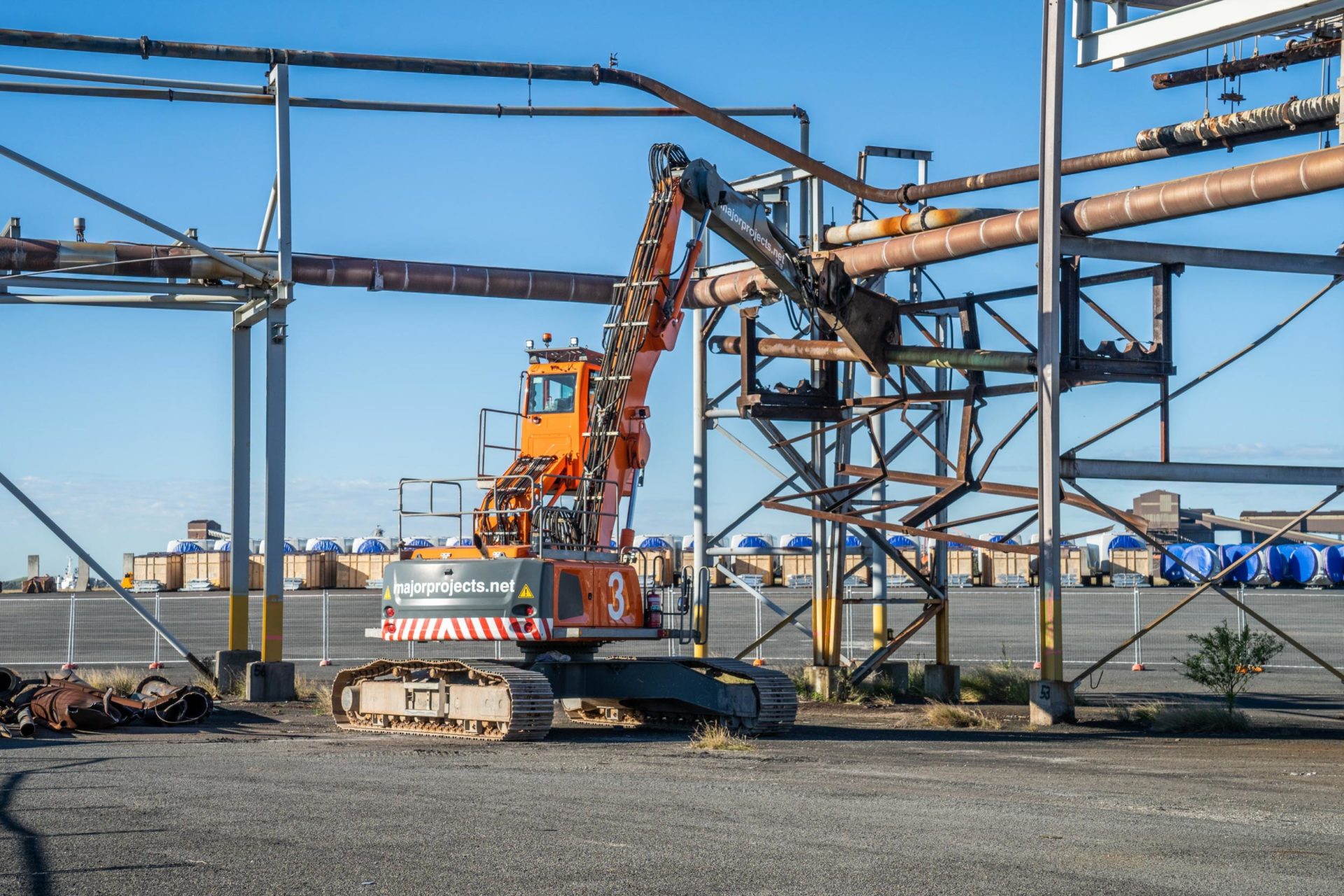

Contact us if you have an upcoming major demolition project? We are here to provide you with the most advanced and cost-effective demolition solutions.


